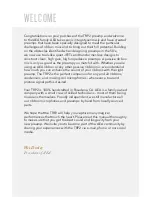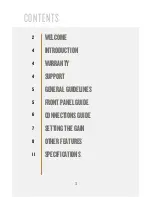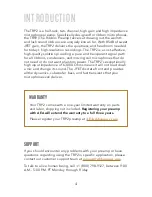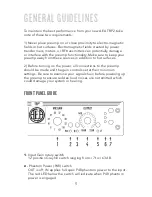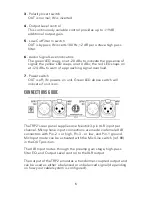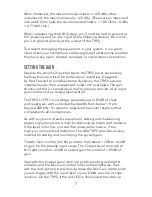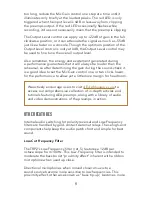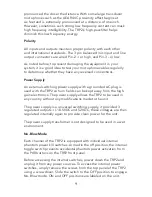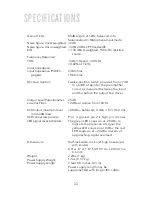
SETTING THE GAIN
When balanced, the maximum output level is +28 dBu; when
unbalanced, the maximum level is +22 dBu. (These are as measured
into a 600 Ohm load; the recommended load is > 10K Ohms; 0 dBu
= 0.7746 V rms.)
When unbalancing the XLR Output, pin-3 must be tied to ground at
the receiving end (i.e. the input of the following device). Do not tie
pin-3 to ground directly at the output of the TRP2.
To prevent damaging the equipment in your system, it is a good
idea to test your microphone cables regularly to determine whether
they have any open, shorted, reversed, or intermittent connections.
Despite the small half-rack footprint, the TRP2 packs several key
features that are critical for professional recording. Designed
by Fred Forssell to handle extreme dynamics, the TRP2 recovers
instantaneously from unexpected “solid red” overloads. The gain
structure of the 2-channel (dual mono) preamp consists of an input
gain control and an output level control.
The TRP2’s JFET circuit design generates up to 85dB of clean
and quiet gain, with extended bandwidth from below 1 Hz to
beyond 200 kHz, for dynamic range and transient response that
complements all microphones.
As with any piece of audio equipment, setting and maintaining
proper signal levels are critical to obtaining optimum performance:
if the level is too low, you sacrifice noise performance; if too
high, you risk overload distortion. The AEA TRP2 provides an easy
method for setting and monitoring the system gain.
The Mic Gain control (ref. #1) provides from about +7dB to +63dB
of gain for the preamp input stage. The Output Level control (ref.
#11) adds a22dB of output gain for a total of +85dB of
gain.
Start with the Output Level control (ref. #4) pointing at the 0dB
indicator and the Mic Gain control fully counterclockwise. Then,
with the microphone in position increase the Mic Gain control until
you are happy with the input level in your DAW, console, or tape
machine. On the TRP2, if the red LED is illuminated too often or
7


